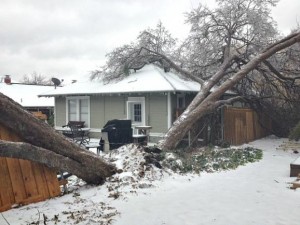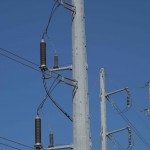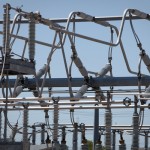There’s a Solution to Power Outages During Texas Storms, But You Won’t Like It

Photo courtesy of Jerome Weeks / KERA News
Two trees couldn't withstand the storm in this backyard near Lower Greenville in Dallas. They tore apart a fence and damaged a roof and tore down a power line.
Against the backdrop of a debate over whether Texas has enough power generation (i.e. power plants) to meet growing demand, two instances of large-scale outages in the past few weeks show a more common vulnerability: power lost to fallen or damaged power lines during storms. Could anything have been done to prevent the outages? The short answer is yes. But chances are you won’t like the full explanation.
An ice storm in Dallas a little over a week ago left over two hundred thousand people without power for days, in sub-freezing temperatures. “We do have a power system that’s primarily based in Texas on overhead distribution lines. And those distribution lines are very vulnerable to weather related events,” says B. Don Russell, Electrical and Engineering professor at Texas A&M University.
Russell says that overall, the U.S. – and in particular Texas – has a very reliable power system. Even during ice storms, power plants can typically stay up and running. (With a few exceptions, like the statewide blackouts of 2011.) But the lines that take the power to people can run into issues. And their number one obstacle?
“The big issue is trees,” says Russell. That’s right. Our leafy friends that give us shade and filter the air? They don’t get along very well with power lines.
“Ice or heavy snow weighs down branches,” Russell says. “Which causes those branches to break and fall over the power system, or weights them down into the power lines and shorts them out.”
And it’s not just ice storms that can cause outages like this. Hurricanes and even your basic thunder storm with strong winds can cause the same kind of outages in Houston that ice causes in Dallas. In the case of the West Texas ice storm before Thanksgiving, few trees were behind the outages. Rather it was ice itself, weighing down lines and poles, that caused outages, a very rare event.
One solution would be to re-build the power lines in Dallas and elsewhere so they’re strong enough to withstand an ice or storm. But Russell says that would be way too expensive — consumers wouldn’t want to pay for it. It would be even more expensive would be to take power lines and put them underground.
Think of it like this: if you’re the city of Dallas, how many snowplows should you buy? With storms infrequent and budgets tight, it may not make sense to spend too much for rare events.
But there is one thing that wouldn’t cost much more and would greatly reduce outages during ice and wind storms, however infrequent they end up being.
“What you would do is, you would go in and you would trim all overhead branches [around power distribution lines]. Remove them completely,” says Russell. “And you would also cut the trees back from the right of way to some substantial distance.”
That’s right. Cut back – and cut down – many of the trees near power lines, and you’ll see many fewer outages.
Current state law doesn’t give any jurisdiction for tree trimming to utilities out of their ten-foot right-of-way. “A tree that’s 50-feet tall, but ten feet out of the right-of-way, it it falls, it’s going to take down the power system,” Russell says, pointing out that almost all of power line interference from trees comes from ones outside of the utilities’ right-of-ways.

Photo courtesy of Texas A&M
B. Don Russell with Texas A&M says there's an affordable solution to prevent power outages during storms in Texas: cut down trees.
“Vegetation management” (aka tree-trimming and brush clearing) is the largest expense for utilities, according to Russell. “So when you’re taking about this, you’re talking about something that’s already a huge expense,” he says. It would take money to clear trees in danger of knocking out power lines, but Russell argues that it would be “substantially cheaper” in the long run when compared to rebuilding the power lines to be stronger. Factor in savings from not having to do tree maintenance or sending out crews when lines are down and it ends up being the best option from a reliability and affordability standpoint, he says.
But changing attitudes (and laws) about trees and power lines would require a major shift. It’s a political uphill battle. Consumers would have to decide they value power during major storms more than a leafy street. They’d have to trust utilities not to overstep their bounds. “Every time there is a major tree-trimming exercise by utilities, there are substantial complaints,” Russell says. Increase utilities’ jurisdiction and you’d be likely to see those complaints skyrocket.
Russell, who says he loves trees, too, points out that to increase power line reliability in the state wouldn’t require a huge impact on Texas trees. “The number of trees we have to cut to make the power system rugged is a trivial fraction of the number of trees in the state,” he says. But it’s still a big number: at least a million trees in North Texas to protect that area from ice storms. (Russell’s recommendations are outlined in a report on file with the Public Utility Commission.)
But absent any policy changes from the state or Public Utility Commission, there’s really only one “solution” left.
“So therefore, we pretty much must simply say, ‘We’re gonna do the best we can,'” Russell says. “But there are gonna be times in ice storms where the power goes out.”


